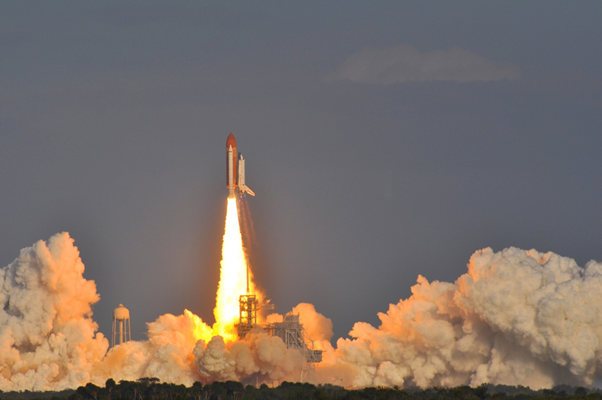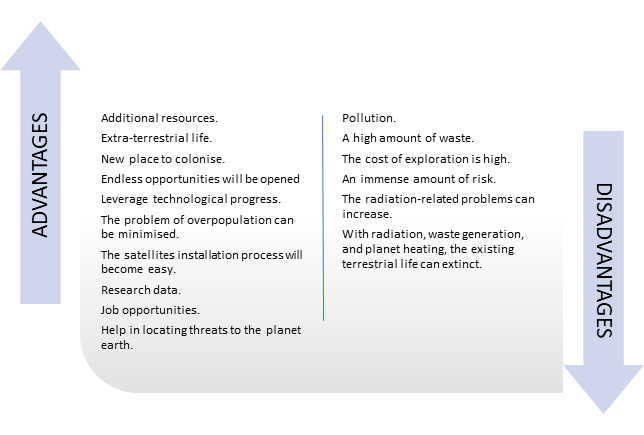Definition
Related Definitions
Space Tourism
What is space tourism?
Space tourism can be defined as a practice of going into space for the purpose of business, leisure, or recreation. Simply put, space tourism can be described as a trip into space for fun.
Space tourism is a niche sector that is a part of the aviation industry. It aims to give average citizens a chance to become astronauts and experience travelling in space.
Space tourism can be experienced by a limited number of consumers as it is extremely expensive and only a few will be willing to purchase it. However, there are different alternatives that can be enjoyed by the space enthusiasts who do not want to spend an outrageous sum of money.
The first space tourist was an American businessman – Dennis Tito, who took his flight on 28 April 2001, after which space touring gained a considerable amount of attention, and more tourism opportunities like orbital and sub-orbital were opened.
Space travel can be only experienced through vehicles that are either government owned (International space station and Russian Soyuz) or fielded by private companies.
Summary
- Space tourism is a practice of taking a trip into space for the purposes of business, leisure, or recreation.
- It is a niche sector managed under the aviation industry aimed at providing tourists with the ability to become astronauts and tour space.
- Space travel continues to remain limited in terms of its reach as it is an expensive affair and very few people are willing to spend large amounts of money for a trip to space.
Frequently Asked Questions (FAQs)
What are the types of space tourism?
There are four types of space tourism,
- Atmospheric zero gravity
- High altitude jet flights
- Orbital trips into space (long duration)
- Suborbital flights (short duration)
How much cost is associated with space tourism?
The cost associated with space tourism gained the attention of many interested experts. It was suggested that only thousands of flights can be sustained by the human-in-space market if the price range is around US$100,000. However, tourism can be leveraged with millions of flights in a year if the price is brought down to US$10,000. Thus, the space tourism market can expand with the right pricing.
The above argument can be supported by the market research conducted by scholars across the globe. A study indicated that millions of customers from the Japanese market are willing to pay US$10,000 per person for flying into space. Another study provided that 20% of the Canadian, German and US population and approximately 40% of the Japanese population will pay US$10,000 for space trips. The research highlighted that 3.5 million people in the US are prepared to pay US$10,000.
A literature review conducted in 2001 by Geoffrey I. Crouch, summarised that the space tourism market is directly affected by the pricing function The study states that the annual demand could reach 5 million at the price of US$10,000 per person and a mere 170 at the price of US$500,000. These would make an annual market that can reach a value of US$50 billion and US$85 million, respectively. When rates are compared with the cost, it can be stated that a hundred million flights will travel into space a year with correct pricing.
Also read: https: Branson steals the march on Bezos in billionaires’ space race

Image Source: © Sermonator1 | Megapixl.com
Which companies help in completing space tourism?
As the idea of space tourism has gained popularity, the businesses engaged in the space tourism are increasing. The top companies which help in visiting the space are:
- Virgin Galactic: The tourism company offers suborbital spaceflights to the customers. To get on the waiting list of the company, an initial payment of 200,000 euros is required.
- SpaceX: The company’s area of focus is lunar tourism and not limiting tourism to the Earth’s orbit. Presently, the company does not have any pricing strategy or any waiting list.
- Blue Origin: It is one of the major competitors of virgin galactic in terms of sub-orbital travel. The company is at the initial stage and has not released any pricing strategy. The plan of the company is to put 6 passengers on each flight.
- Orion Span: The company aims at establishing a space hotel in lower part of the Earth’s orbit. The tourism will host only 6 people at one time. The present cost of the reservation is 7 million euros, and the company has been able to gain several reservations.
- Boeing: It is one of the largest space tourism players as it had signed a contract with NASA for the development of crew vehicles with the involvement of private companies, which will be launched in the orbit.
What is the impact of space tourism on climate?
Space tourism can affect the earth’s climate in numerous ways. A computer simulation indicated that the soot released by the rockets can increase the earth’s temperature and reduce the seasonal ice cover. However, the claims were not proven.
In the few years, passengers will be sent to space (suborbital flights will be launched) on regular basis, and considering this aspect, researchers are investigating the flight’s impact on the climate.
It is estimated that emissions will generate due to a rubber-burning engine that could be present in spaceships like the SpaceShip Two, which is the owned by Virgin Galactic.
Soot is an incompletely burned fuel and it has a more negative effect than the carbon dioxide released during the launch. Soot can absorb sunlight and therefore, can further heat the planet.
What are the advantages of advancement in space tourism?
- Additional resources will be made available through space exploration.
- Extra-terrestrial life can be explored.
- Space exploration might result in finding a new place to colonise.
- Endless opportunities will be opened, satisfying the human urge to be curious and to explore.
- Space tourists will leverage technological progress.
- The problem of overpopulation can be minimised through colonisation.
- The satellites installation process will become easy.
- Data available for research data would expand.
- Job opportunities will increase tremendously.
- Help in locating threats to the planet earth.
What are the disadvantages of advancement in space tourism?
- The pollution created by space tourism would be a major issue.
- Space exploration will generate a high amount of waste.
- The cost of exploration is high.
- An immense amount of risk is associated with space tourism.
- Radiation-related problems can increase.
- With radiation, waste generation, and planet heating, the existing terrestrial life can become extinct.


